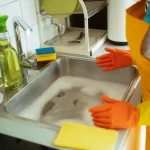As winter loosens its grip and temperatures begin to rise, Canadians eagerly anticipate the arrival of spring. However, the transition from winter to spring brings with it the risk of spring thaw flooding. Melting snow and ice can lead to water damage, mold growth, and structural issues if not properly managed. In this comprehensive guide, we will explore effective strategies to safeguard your property from spring thaw flooding, ensuring your home remains dry and secure.
Understanding Spring Thaw Flooding
Spring thaw occurs when temperatures rise above freezing, causing accumulated snow and ice to melt. This process can be gradual or rapid, depending on weather conditions. The resulting water can overwhelm drainage systems, rivers, and streams, leading to localized flooding. Understanding the risks associated with spring thaw is the first step in protecting your property.
Risks of Spring Thaw Flooding
- Flooding: Melting snow and ice can lead to an influx of water that overwhelms drainage systems, causing flooding in basements and low-lying areas.
- Ice Dams: Ice dams form when melting snow refreezes at the edge of a roof, preventing proper drainage and causing water to seep into the home.
- Foundation Damage: The expansion and contraction of soil due to freezing and thawing can exert pressure on the foundation, leading to cracks and structural damage.
- Mold and Mildew: Excess moisture from snowmelt can create favorable conditions for mold and mildew growth, posing health risks and requiring costly remediation.
Preventative Measures to Protect Your Property
Taking proactive steps can help you prevent spring thaw flooding and protect your property from water damage. Here are some effective strategies:
1. Clear Snow and Ice
- Remove Snow Around Your Home: Use a shovel or snow blower to clear snow from around your home, especially near the foundation. This prevents melting snow from seeping into the basement or crawlspace.
- Clear Roof and Gutters: Use a roof rake to remove snow from your roof and clear gutters and downspouts of debris to ensure proper drainage.
2. Maintain Proper Drainage
- Inspect and Clean Gutters: Ensure that gutters and downspouts are clear of debris to allow for proper water flow. Consider installing gutter guards to prevent clogs.
- Extend Downspouts: Extend downspouts at least 6 feet away from your home to direct water away from the foundation.
- Grade the Landscape: Ensure that the ground around your home slopes away from the foundation to prevent water from pooling near the house.
3. Install a Sump Pump
- Sump Pump Installation: Install a sump pump in your basement to remove excess water and prevent flooding. Consider a model with a battery backup to ensure it functions during power outages.
- Regular Maintenance: Regularly test and maintain your sump pump to ensure it is in good working condition.
4. Seal Cracks and Gaps
- Inspect Foundation and Walls: Check your foundation and walls for cracks and gaps. Seal any openings with caulk or hydraulic cement to prevent water infiltration.
- Install Window Well Covers: Use window well covers to prevent water from entering basement windows.
5. Create a Flood Barrier
- Sandbags: Use sandbags to create a barrier around your home’s foundation and prevent water from entering.
- Flood Vents: Install flood vents in your foundation to allow water to flow through and reduce pressure on the walls.
6. Monitor Weather Conditions
- Stay Informed: Keep an eye on weather forecasts and be aware of any flood warnings in your area. This allows you to take timely action to protect your property.
- Prepare an Emergency Kit: Have an emergency kit ready with essential supplies, including a flashlight, batteries, water, and non-perishable food.
Additional Preventative Measures
Beyond the basic steps, there are additional measures you can take to further safeguard your property from spring thaw flooding:
1. Install a French Drain
A French drain is a trench filled with gravel or rock containing a perforated pipe that redirects surface water and groundwater away from your home. This system can be particularly effective in areas with poor drainage or high-water tables.
2. Use a Dehumidifier
Using a dehumidifier in your basement can help control moisture levels and prevent mold and mildew growth. This is especially important during the spring thaw when humidity levels can rise.
3. Waterproof Your Basement
Consider waterproofing your basement to provide an additional layer of protection against water infiltration. This can include applying waterproof coatings to walls and floors, installing a vapor barrier, and using waterproof sealants on cracks and joints.
. Install Backwater Valves
Backwater valves prevent sewage from backing up into your home during heavy rainfall or flooding. Installing these valves can protect your basement from contamination and water damage.
5. Maintain Your Plumbing System
Regular maintenance of your plumbing system can help prevent leaks and water damage. This includes checking for leaks, inspecting pipes for signs of wear, and ensuring that all fixtures are in good working order.
When to Call a Professional
While many preventative measures can be handled by homeowners, there are times when it’s best to call a professional:
1. Persistent Water Issues
If you notice persistent water issues around your foundation despite taking preventative measures, it’s essential to have a professional assess the situation and recommend solutions.
2. Significant Foundation Cracks
If you find large or widening cracks in your foundation, a professional can assess the damage and recommend appropriate repairs to prevent further issues.
3. Sump Pump Installation
Installing a sump pump requires expertise to ensure it functions correctly. A professional can help you choose the right model and install it to industry standards.
4. Waterproofing Services
Professional waterproofing services can provide comprehensive solutions to protect your basement from water infiltration. This can include installing drainage systems, applying waterproof coatings, and sealing cracks and joints.
Conclusion
Spring thaw flooding can pose significant risks to your property, but with the right preventative measures, you can protect your home from water damage. By clearing snow and ice, maintaining proper drainage, installing a sump pump, sealing cracks, and monitoring weather conditions, you can safeguard your property and ensure it remains dry and secure.
Call to Action
If you’re concerned about spring thaw flooding or need professional assistance to protect your property, contact Absolute Draining & Plumbing. Our experienced team is here to help you with all your flood prevention needs, ensuring your home remains safe and dry. Contact us today to schedule a consultation and take proactive steps to safeguard your property.
Additional Resources
For more information on safeguarding your property from spring thaw flooding, check out these helpful resources:






